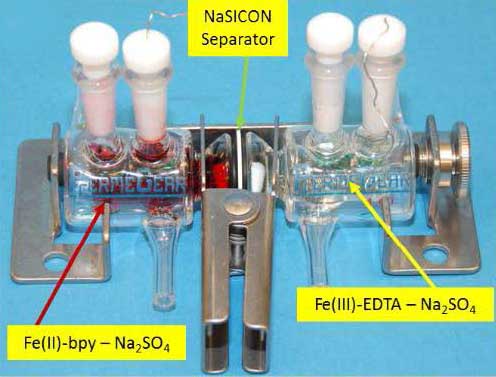Solid State Ceramic Disc Membrane for Longer-Lasting Flow Batteries
A solid-state ceramic disc membrane that increases the lifespan of aqueous-based system batteries by eliminating cross-over species and increasing conductivity
Redox flow batteries (RFB) are an increasingly promising solution for large-scale energy storage applications. The unique architecture of RFBs stores the analyte and catholyte within individual containers, which allows for individual control of power and energy. The most common RFBs are vanadium redox flow batteries (VRFB) which are gaining traction for grid-level storage needs. Typically RFBs use oil-based porous polymer membranes which face limitations such as low selective permeability. The resulting ion mixing causes battery inefficiencies and shorter lifespans and reduced performance.
Sandia researchers have developed a solid-state ceramic disc membrane that shows no evidence of allowing crossover species through the membrane. The disc membrane also provides simultaneous charge compensation control that can be accomplished within dissimilar electrolyte solutions. The technology eliminates corrosion and uses abundant materials such as iron rather than scarce metals such as vanadium and lithium. The aqueous-based solvent eliminates cost while increasing safety and health for people and the environment, compared to traditional lithium-ion batteries. This advancement is relevant for storing station energy or electrical grids that require easy, flexible and long-term scalable electrochemical energy storage devices with reduced ion crossing.
- Reduced cost
- Long-term aging stability
- Allows dissimilar electrolyte compositions
- High room temperature conductivity
- Redox chemistry
- Grid-level storage
- Energy storage and batteries
- Renewable energy
- Solar and wind farms

vs. 4mM Fe-EDTA anolyte with a NaSICON IEM
| Patent Title | Patent Number | Grant Date |
|---|---|---|
| Aqueous Na-ion redox flow battery with ceramic NaSICON membrane | 10,586,997 | 03/10/2020 |
SD 14061
Published5/2/2023
Last Updated5/2/2023